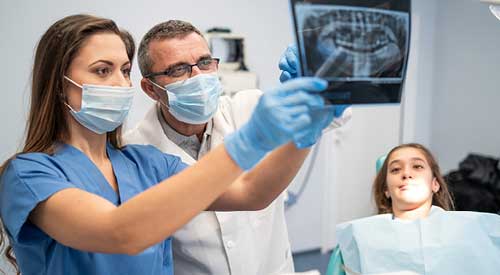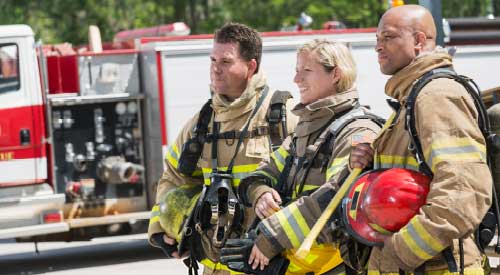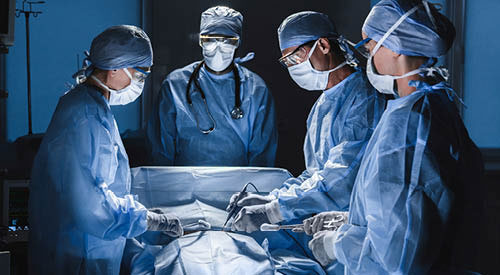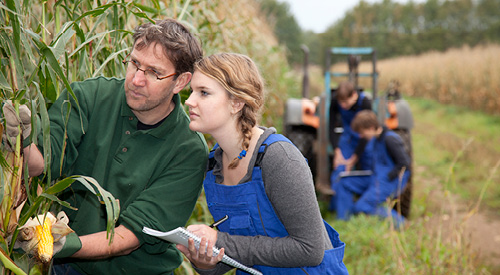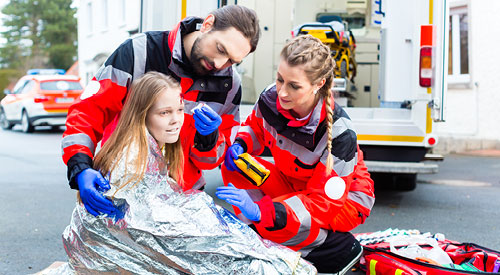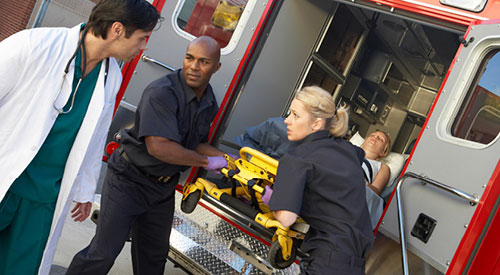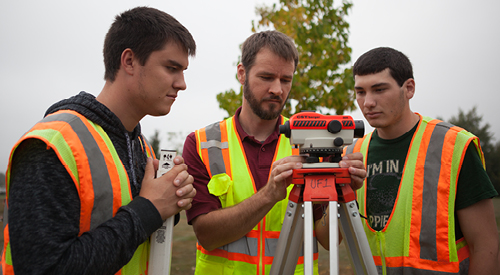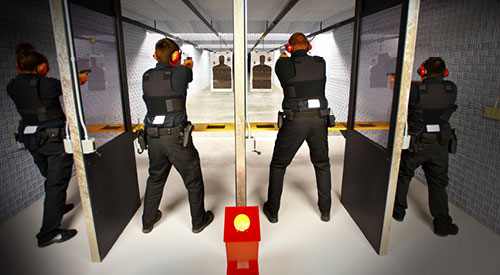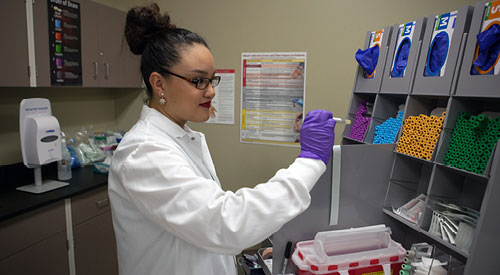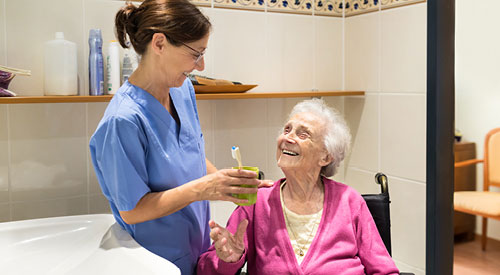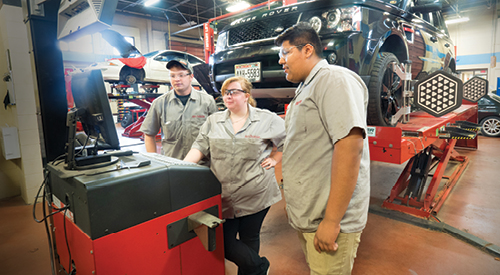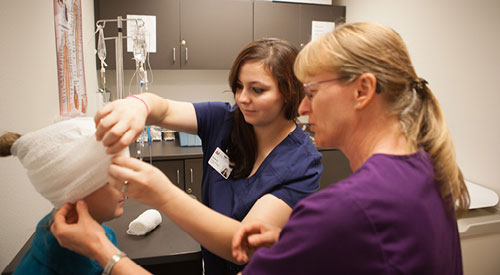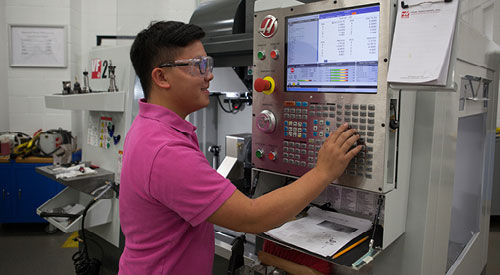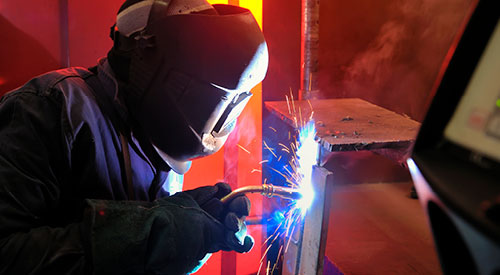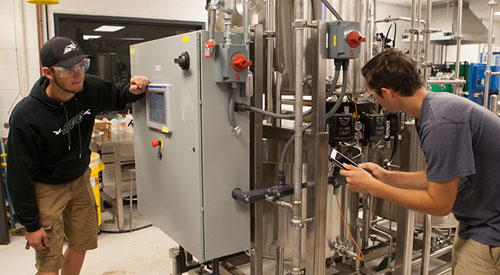All Mid-State locations are closed Wednesday, December 24, through Sunday, January 4, for winter break. We look forward to assisting you when we open again on Monday, January 5. Some online holiday closure services remain available.
Paramedic
Why choose Paramedic?
- Paramedic teams are the heroes first on the scene and most qualified to make a life-or-death difference for the critically ill or injured.
- Learn the skills needed to provide preliminary treatment and transport patients to a medical facility for further treatment if necessary.
- Complete 1,150 hours of coursework that adheres to all national and state guidelines, and be eligible to participate in the National Registry examination required for Wisconsin state licensure.
- Interested in earning a bachelor’s degree? For transfer opportunities, visit mstc.edu/transfer.
- Gain confidence with your new skills in our state-of-the art Healthcare Simulation Center.
Program Locations
Wisconsin Rapids Campus
500 32nd Street North
Wisconsin Rapids, WI 54494
Delivery:
Hybrid/Blended
Daytime
Full-Time
Varying Class Schedule
Length of Program: One Year
Credits: 38
Start Dates: Fall
What You'll Learn
Mid-State’s Paramedic program provides the knowledge and skills needed to work competently as an entry-level paramedic. Students enter a joint core course cohort with Paramedic Technician degree students. Graduates earn a technical diploma upon successful completion of this program.
This program consists of classroom lectures, practical skills lab, laboratory simulations, and hospital and pre-hospital clinical experiences. Upon successful completion, you will earn certifications in Advanced Cardiac Life Support, Prehospital Trauma Life Support, and Pediatric Advanced Life Support and be eligible to take the National Registry of Emergency Medical Technician written and practical examinations.
Outcomes
- Prepare for incident response and EMS operations.
- Integrate pathophysiological principles and assessment findings to provide appropriate patient care.
- Demonstrate paramedic skills associated with established standards and procedures for a variety of patient encounters.
- Communicate effectively with others.
- Demonstrate professional behavior.
- Meet state and national competencies listed for paramedic certification(s).
Technical Standards
Students in this program should be able to meet its specific technical standards. These are the essential skills and abilities needed to be successful in the program, with or without reasonable accommodation. It is important to review and understand these standards before applying to the program.
View Technical Standards For This Program
Employability Skills
- Behave Responsibly: Ethical Behavior, Self-Responsibility, Conflict Resolution, Collaboration
- Communicate Effectively: Writing, Technical Documentation, Listening, Speaking, Interpersonal Communication, Reading
- Critical & Creative Thinking: Inquiry, Evidence Collection, Analysis, Reasoning, Reflection (Metacognition)
- Cultural, Social, & Global Awareness: Global Awareness, Social & Cultural Awareness, Social Responsibility
- Use Appropriate Technology: Use of Technology, Confidentiality, Security, Digital Civility
Learn more about employability skills at Mid-State.
Estimated Entire Program Cost
Cost based on the 2025/26 academic year.
- Tuition & Fees: $6,836.40
- Books: $77.70
- Supplies, Uniforms, and/or Exams: $375.00
- Total Estimated Cost: $7,289.10
Financial Aid Eligibility
This program is eligible for full Financial Aid.
Cost of Attendance
Learn more about Cost of Attendance, an estimated budget that includes categories of expenses a student can expect to incur while attending.
This course has options available to receive credit for prior learning (CPL) or work experience.
| Catalog# | Title | Credits | |
|---|---|---|---|
| 10531911 | EMS Fundamental | 2 | |
| 10531912 | Paramedic Medical Principles | 4 | |
| 10531913 | Adv. Patient Asses Principles | 3 | |
| 10531914 | Prehospital Pharmacology | 3 | |
| 10531955 | Paramedic Cardiology 1 | 2 | |
| 10531959 | Paramedic Clinical | 2 | |
| 10531918 | Adv. Emergency Resuscitation | 1 | |
| 10531915 | Paramedic Respiratory Management | 2 | |
| Term Total | 19 Credits | ||
| Catalog# | Title | Credits | |
|---|---|---|---|
| 10531919 | Paramedic Medical Emergencies | 4 | |
| 10531920 | Paramedic Trauma | 3 | |
| 10531921 | Special Patient Populations | 3 | |
| 10531922 | EMS Operations | 1 | |
| 10531923 | Paramedic Capstone | 1 | |
| 10531956 | Paramedic Cardiology 2 | 2 | |
| 10531957 | Paramedic Field Experience | 3 | |
| 10531958 | Paramedic Field Leadership | 1 | |
| 10531960 | Paramedic Clinical/Field Prep | 1 | |
| Term Total | 19 Credits | ||
| Program Total | 38 Credits |
Instructors
NATHANIEL DISHER, BS
Nathaniel earned his BS in human biology with an emphasis in health science from the University of Wisconsin–Green Bay. He also completed the Paramedic Technician program at Mid-State Technical College and is a licensed Paramedic with Critical Care and TEMS endorsements in Wisconsin. He is also a licensed Paramedic from the National Registry of EMTs. Nathaniel was a full-time paramedic for over three years and currently works part-time to stay current with field advancements and keep clinical skills sharp. His experience also includes three years as an adjunct EMS instructor, including completion of the Mid-State EMS instructor internship.
“I love teaching because it gives me the chance to prepare others to make a difference in their communities—when people need them most.”
RYAN HUSER, AD, BA, MA
Ryan earned his associate degree from the Paramedic Technician program at Mid-State Technical College, his BA in fire and emergency response management from UW–Oshkosh, and his master’s in disaster and emergency response management from American Public University. He is a national registered paramedic with the National Registry of Emergency Medical Technicians and is a state licensed paramedic with critical care endorsement. Ryan is also a National Registry Examiner for EMT, AEMT, and Paramedic Exams and has worked on many state-level educational projects, such as the Standards and Procedures Manual update, the latest curriculum rewrite, and the development of the new EMT certification testing.
“My eyes have seen more and my hands have done more than most people can imagine, and this experience stays with me in the classroom to train better paramedics than generations past.”
Careers
- Paramedic Technician
- EMS Provider
- Firefighter/Paramedic
- First Responder
- Emergency/Urgent Care Technician
Fast-Track
High school students are eligible to enroll in this program; however, some courses have age requirements. Speak to a Mid-State advisor for more information. Learn more about Mid-State Fast-Track.
- Accreditation Information
-
The Paramedic program is accredited by the Commission on Accreditation of Allied Health Programs (CAAHEP)
Commission on Accreditation of Allied Health Education Programs
9355 113th St. N, #7709 Seminole, FL 33775 • 727.210.2350 • www.caahep.org - Accreditation Outcomes
-
Student Outcomes Data
Student Outcomes Measure Year Mid-State Outcome
Commission on Accreditation of Allied Health Education Programs ThresholdProgram Retention 2023 94.7% 70% National Registry Exam Pass Rate 2023 66.7% 70% Positive Job Placement 2023 100% 70% - Additional Resources
- Licensure Information
-
Mid-State’s Paramedic program prepares students to obtain the required licensure to be employed/practice in the state of Wisconsin. The College does not guarantee its curriculum matches the requirements for preparation, examination, or licensure for other states.
Take the Next Step
“The education and hands-on training I received from Mid-State thoroughly prepared me for my career. I found it easy to transition from a student to a successful full-time paramedic.”
JESS BUCHHOLZ
GRADUATE
Choose Your Path
Career pathways help you take your education one step at a time to maximize your investment and make college fit your life. Earn a credential and start using it in the workforce. Continue with another stack of related courses to gain a more advanced diploma or degree. Explore this program’s pathway in the graphic below. For an even quicker first step to a degree or diploma, check out our short-term certificates.
Transfer • Dual Credit • Credit for Prior Learning




























